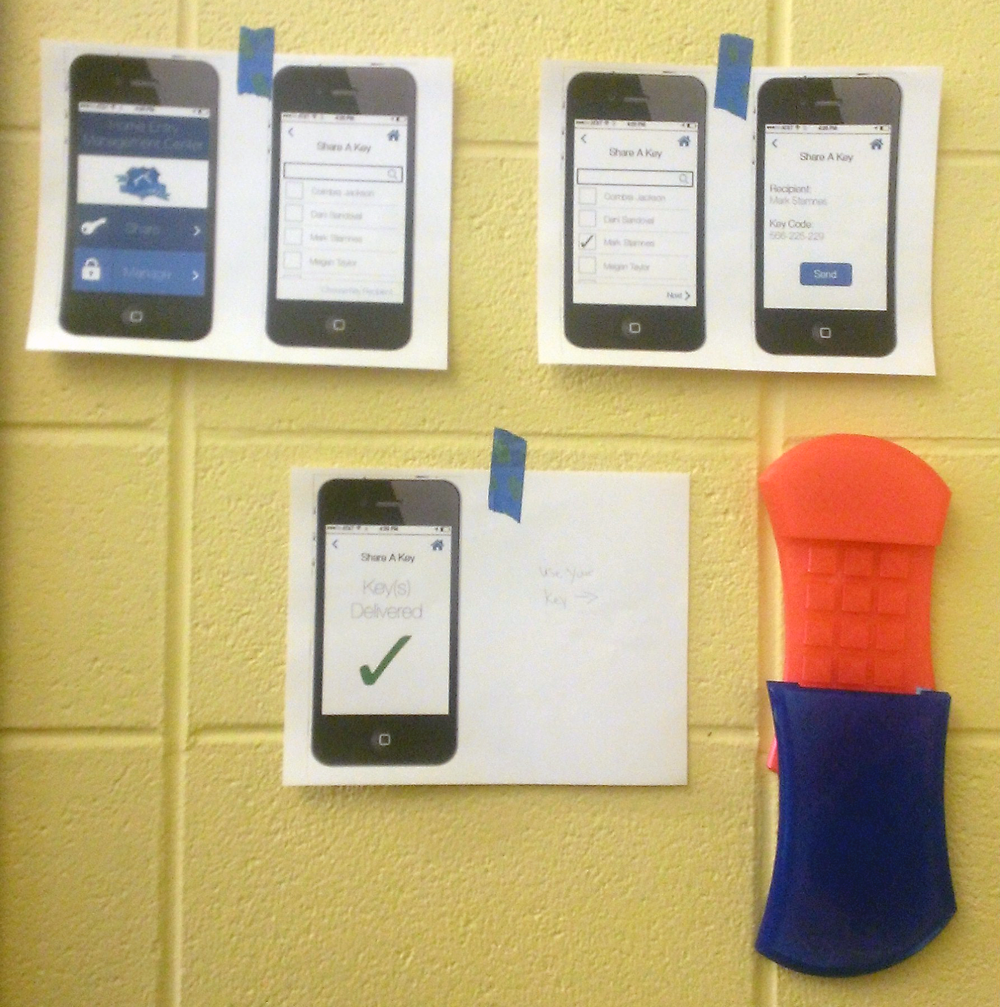Personal property is valuable. Maintaining access to personal property can cause frustration because users have inadequate tools for securing their belongings and protecting themselves reliably and affordable. As a result, our team designed a home entry system that helps users achieve their goal of effortless security.
We designed this system over a 10 week period during our Human Centered Design and Engineering 418 winter 2015 course titled “User Experience Design.” Our team consists of 4 unique and dedicated individuals. After successful collaboration over the course of this quarter, we were able to plan and complete the following milestones:
- Conducting and synthesizing research
- Creating and polishing personas
- Developing scenarios
- Sketching designs
- Generating storyboards
- Producing a sitemap
- Making a paper prototype
- Testing our prototype through an evaluation process
- Developing in depth wire-frames
- Making high-fidelity mock-ups using Photoshop, PowerPoint and 3D printed parts.
Our design consists of four components: an entry system which utilizes a door mounted keypad, a central transceiver within the home, a key fob and a mobile phone application for generating and sharing electronic key codes. Users can unlock and open doors with either a key fob or the keypad. Owners manage temporary electronic key codes (for guests) using the mobile application. The system determines when to unlock based on communication between the central transceiver and either the keypad or the key fob. All interactions are verified through the central transceiver (separate from the door) to minimize an intruder’s ability to tamper with the locking mechanism. Homeowners can further customize their access settings through simple application interactions, which is further detailed in our wire-frames and hi-fidelity mock-ups.
